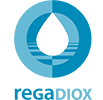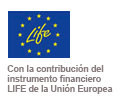Irrigation water use in Spain has gradually fallen, from 17,681 cubic hectometres in 1999 to 15,833 in 2012, which represents a reduction of more than 10% in that period, as indicated by the latest data from the survey on water use in the agricultural sector of the National Institute of Statistics of Spain.
These figures, however, contrast with data on irrigated areas in Spain, which show a moderate but steady increase for more than a decade, from 3,367,486 hectares in 2002 to 3,605,121 hectares in 2014. A trend which is reflected in the report on irrigation in Spain carried out by the Ministry of Agriculture, Food and Environment.
This improvement in the use of water resources in agriculture is the result of the actions undertaken to modernise irrigation in Spain, and the efficiency in the use of water, not only for the improvement in its management through the works carried out but also by the progressive evolution towards more efficient irrigation systems.
USE OF WATER IN IRRIGATED FARMLAND
EVOLUTION OF TYPES OF IRRIGATION
As shown in the Report on Irrigation in Spain, the irrigation system that has increased the most in recent years is drip irrigation, whose use has increased from 1,197,465 hectares in 2004 to 1,756,138 hectares in 2014. A more efficient system with very controlled water demands, deployed in 558,673 new hectares in the last decade.
There has also been an increase in the number of automated systems, such as the automotive system, which was already used in 259,434 hectares in 2004 and was applied in 304,254 hectares in 2014. An increase of 12.97 percent.
However, the area irrigated by gravity-fed systems, with higher water consumption, decreased from 1,197,465 hectares in 2004 to 986,463 hectares last year.
The efficiency of these systems is verified by the volume of water used by each irrigation technique that, according to the latest data from the National Institute of Statistics of Spain for 2012, show that, 5,387,090,000 m3 were used for drip irrigation systems applied that year in 1,662,847 hectares. On the other hand, sprinkling and automotive irrigation, which were applied in 838.299 hectares, consumed 4,066,180,000 m3. Finally, the gravity-fed irrigation system, applied in 1,020,245 hectares, used 6,379,445,000 m3.
This evolution reflects the coherence with irrigation policies developed in recent years, aimed to achieve a sustainable and efficient agriculture.
IRRIGATION BY CROPS
According to data from 2014, most irrigated crops are cereals (1,002,740 ha), accounting for 27.81% of the total irrigated area, followed by olive crops (740,511 ha) accounting for 20.54% of the total irrigated area. Then comes vine (352,343 ha), amounting to 9.77% of the total irrigated area, citrus fruits (279,883 ha), equivalent to 7.76% of the total irrigated area and non-citrus fruits (271,711 Ha) amounting to 7.54% of the total irrigated area.
Concerning the volume of water used, and according to INE data for 2012, the decrease of 1.8% in arable crops, including cereals, legumes, rice, maize and forage crops, stands out, representing 57.8% of the total volume of irrigation water used in the agricultural sector.
The crops that experienced the greatest decline were olive and vine, with 19% less than the previous year, representing 9.0% of the volume of irrigation water used in 2012.
MODERNISATION OF IRRIGATED FARMLAND
The greatest balance achieved between irrigated area and water consumption has been attained for the most part thanks to the modernisation of irrigation systems undertaken since 2000, when the actions of the National Irrigation Plan began. Actions under the Plan have affected 1.5 million hectares.
Since then investments have been made amounting to 3,815 million euros. This figure includes both public and private investments. Private investments were made by Irrigation Associations (1,172 million euros), not including the investments made in the irrigation systems within each farmer’s parcel.
Public investment amounted to 2,643 million euros, 67% of which were funded by AGE and 33% by Autonomous Communities.
European funds received amount to 35% of public investment.
These investments have made it possible to make a more efficient use of water by being able to apply it in the quantity and at the right time for the maximisation of irrigation and to reduce the pressure on the bodies of water, both by detraction and contamination, since the returns of irrigation have been minimised.
Non-conventional water resources have also been incorporated in many cases, reducing pressure on conventional bodies and introducing elements, such as telecontrol, that allow an optimal management of the water-energy equation.
The actions carried out have managed to improve the standard of living of the farmers and to bring them into the society of technology, information and innovation, thus favouring the maintenance of the local population in the territory, making work in rural areas more attractive.
On the other hand, they allow to maintain and improve the competitiveness of irrigated agriculture, since they increase the yields and guarantee of production, they promote the diversification of production so as to adapt to new economic and / or climatic scenarios and they reinforce the agroindustry associated to it, because there is greater guarantee and diversity in production.
They also contribute to the maintenance and conservation of the environment in the territory, harmonising the necessary irrigation actions with the conservation and maintenance of ecosystems. All these modernisation processes have successfully passed the pertinent environmental assessment and comply with the conditions and with the measures proposed by the environmental body.
Source: MAGRAMA, INE National Institute of Statistics of Spain

